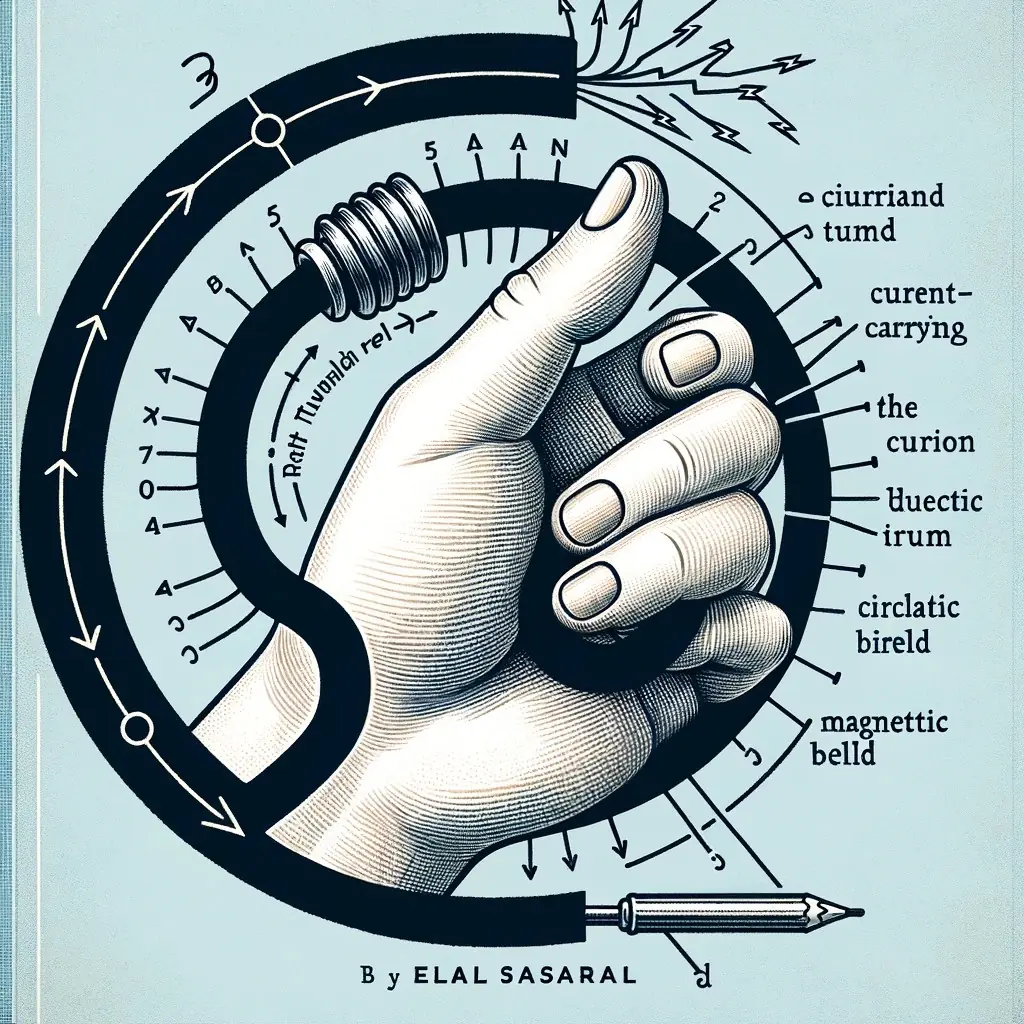
Understanding the Right-Hand Thumb Rule: Applications in Electromagnetism and Electrical Engineering

Introduction
The Right-Hand Thumb Rule, often referenced in physics and electrical engineering, is a fundamental concept used to determine the direction of the magnetic field relative to the current flow in a conductor. This rule plays a pivotal role in understanding and designing various electrical and magnetic devices.
The Right-Hand Thumb Rule Explained
The rule states that if you hold a current-carrying conductor in your right hand such that the thumb points in the direction of the current, then your curled fingers will indicate the direction of the magnetic field generated around the conductor. This is a direct consequence of the magnetic effect of electric current, first discovered by Hans Christian Ørsted in 1820.
Scientific Basis and Applications
- Electromagnetism: The Right-Hand Thumb Rule is rooted in the principles of electromagnetism. It visually represents the relationship between electric currents and magnetic fields, which was further developed by André-Marie Ampère and James Clerk Maxwell.
- Electric Motors: In electric motors, this rule helps in determining the direction of force experienced by a current-carrying conductor in a magnetic field. This principle is key in designing the rotational movement in motors.
- Generators: Similarly, in generators, this rule is used to understand the direction of induced current when a conductor moves in a magnetic field.
- Magnetic Field Visualization: The rule is a practical tool for visualizing the orientation of magnetic fields around conductors, which is essential in designing circuits and electrical layouts.
Real-World Experimentation
A simple experiment can be conducted to demonstrate this rule. Take a straight conductor and pass a current through it. Using a small compass, observe the direction of the needle as it aligns with the magnetic field around the conductor. The compass needle direction will corroborate the Right-Hand Thumb Rule.
Advanced Applications
- Magnetic Resonance Imaging (MRI): The principles behind the Right-Hand Thumb Rule are also applied in MRI technology, where magnetic fields and radio waves are used to create detailed images of the body’s internal structures.
- Particle Accelerators: In particle physics, this rule helps in understanding the behavior of charged particles as they move through magnetic fields in accelerators.
- Electromagnetic Induction: This concept is crucial in the study of electromagnetic induction, where a changing magnetic field induces an electric current in a conductor.
Conclusion
The Right-Hand Thumb Rule is not just a theoretical concept but a practical tool with vast applications in modern technology. From designing the simplest electric circuits to understanding complex electromagnetic phenomena, this rule forms the backbone of many technological advancements. Understanding and applying this rule is essential for students and professionals in physics, engineering, and related fields.